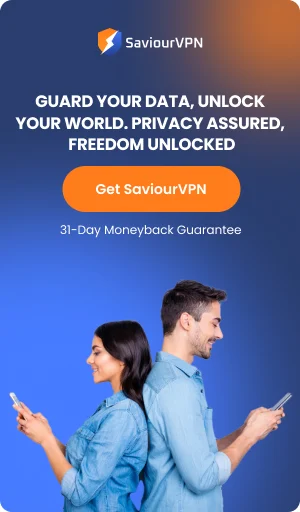- By Hammad Memon
- May 27, 2025
Table of Contents
In today’s era, you can experience a whole shopping trip from the comfort of your own home. Order a sweater or a pizza – right from your bed with the easy option of online transactions and payments. As convenient as it can be, online transactions are exposed to risks and threats.
However, you don’t have to worry since there are a few safe and risk-free convenient methods for online transactions as well. Whether transferring money online to your friend or checking out from an online e-commerce website, these methods would help you protect your financial information and transactions, no matter where you choose to input your financial details.
Online Payment Threats
Shopping online is more convenient than any other activity today—be it grocery shopping, shopping for clothes, or shopping for gadgets—it’s never been easier. However, when you enter your card details on such e-commerce websites and platforms, you expose yourself to the risk of theft and cybercrimes.
People have suffered significant losses by simply trying to pay online. Here are a few online threats and risks that you should be aware of;
- Fraudulent Transactions: Third parties can sometimes make unauthorized transactions from your bank accounts if you input your card details anywhere online and drain your account.
- Hackers: Malicious parties may steal and empty your bank accounts while you’re trying to perform an online transaction.
- Identity Theft: When you input your credit card details on a website, there’s a great chance of your private information being given out, as well as being at risk of identity theft
- Data Breaches: Several websites have vulnerable security that might lead to your personal data being leaked.
- Phishing Scams: Sometimes, people get scam messages asking for their private information, which might lead to phishing scams.
08 Safest Ways To Pay Online
- Credit or Debit Cards
Credit or debit cards are undoubtedly the easiest way to make online payments. It requires little effort; all you have to do is input your card number, your card expiration date, and your CVV number. It’s easy to use and is acceptable worldwide. Credit/Debit cards usually have fraud detection systems as well, which highly reduces the fraud risk.
However, using a credit card has its own risks. It exposes you to the possibility of inevitably high debts, overdraft fees, and high interest rates.
- Digital Wallets
Digital wallets like Google Pay or Apple Pay are one of the safest ways to pay online. They have a secure payment process and require no personal information in order to initiate a transaction.
With a digital wallet like Apple Pay and/or Google Pay, you can manage several payments with a lower risk of exposing yourself to theft or cybercrime.
However, online transactions with digital wallets can result in additional fees and certain account limitations, such as how much you can spend or receive in a day.
- Cyrptocurrencies
Cryptocurrencies like Bitcoin have been used by privacy-conscious consumers. When you buy something online, you use Cryptocurrency to pay for the transaction, which is then processed by blockchain technology. Since cryptocurrency is not linked to any bank or government, fraud, and other entities, it is most resistant to theft and fraud.
However, crypto is still not a widely accepted currency; it can be known as volatile and has less impact than standard currency, as it is widely accepted globally.
- Bank Transfers
Bank transfers are an old way to pay online, but like we all say, old is gold. Online transfer usually occurs between two parties: the consumer and the seller’s financial institution. The fewer parties involved, the less chance of fraud.
However, bank transfers are slower than debit/credit cards. Getting a transfer recovered can be a little challenging if you ever dispute it. Nonetheless, bank transfers are a safe way to pay online for anything.
- Virtual Payment Cards
Virtual payment cards are known to be one of the safest ways to pay online. With a VPC, you can get temporary card details for a specific number of online transactions. This way, if your information ever does leak, it cannot be used for unauthorized transactions since it’s not your real card details; it’s just virtual payment card details. The user can often set the expiration date and get new virtual card details if they ever want to use it again.
As safe as this method can be, it’s only a temporary solution. How many times will a consumer keep asking for virtual payment card details? It has limited availability and an expiration date, so it’s not as reliable as it sounds.
- Mobile Payment Apps
Mobile payment applications like Zelle, PayPal, and Venmo have received a lot of recognition from the market. These apps are linked to your bank accounts and are perfect for peer-to-peer transactions as well as small transactions with vendors. They offer facial recognition or fingerprint features for maximum security.
While this is a safe way to perform transactions, you are heavily dependent on your smartphone for this type of payment, and as of today, it’s not a widely accepted method by most merchants worldwide.
- Biometric Payments
Biometric payments are an easier way to perform transactions. There is no need to input your details or card details; simply rely on your features like eye scans, facial recognition, or fingerprints. It’s an insanely safe way to perform transactions, but biometric payments aren’t used alone. They are a gateway to conduct transactions via Apple Pay or any other mode of payment.
With biometric payments, you can access your digital wallets more safely and conveniently.
- Gift Cards
Gift cards are not only an easy way to conduct transactions, but they’re usually a safe way, too. With gift cards, you do not need any kind of personal information at all. All you have to do is buy the gift card that is worth the money and scratch the card. When you’re done with that, enter the gift card code into your payment gateway, and you’re good to go!
But be cautious since gift cards usually have an expiration date. If you use it after that, your money is wasted.
Other Ways To Be Secure While Making Online Payments
Use Two-Factor Authentication (2FA) for Transactions
A simple yet highly effective, method to secure your online transactions is to enable Two-Factor Authentication (2FA). It does not matter whether you are using a bank app, digital wallet, or mobile payment application to complete your transactions; 2FA can help ensure that no one can access your accounts, even if they have your username, password, and other identifiable information. All you have to do is check your 2FA option, which generally requests a code sent to your device.
Shop only on HTTPS-enabled websites
Before confirming a purchase or completing an online transaction, always check that the website address begins with “https://” vs “http://.” The “s” indicates the website is SSL-encrypted, which allows for protecting your data as it is being sent to and from the website. Never shop or make payments on websites that are not secure, as these may put your data and personal information at risk of being stolen.
Stay Away from Public Wi-Fi While Conducting Transactions
Making transactions with money online when using public Wi-Fi is risky because anyone can hack into unprotected networks. If you have to purchase or send money while traveling around, always use a VPN to protect your financial transactions, or just simply use your mobile network instead.
Check Your Bank Statements Regularly
Although you use the most secure methods of online payment, it is still a good practice to regularly check your bank and credit card statements. Checking your statements regularly will help you find any unauthorized transactions sooner and get them reported before they become huge losses. Ask your bank if you can have an instant alert for transactions to find fraud even faster.
Use A VPN To Ensure Safe Payments
There are several ways to conduct online transactions. However, you can make this experience a lot easier and safer.
Using a VPN can make your transactions safer, whether you use credit cards, biometric methods, or digital wallets. A secure VPN like SaviourVPN hides your IP address and personal details while you are on the internet. Using a VPN while processing online payments keeps your online information and digital presence hidden with 100% anonymity.
With an encrypted internet connection like SaviourVPN, you can enjoy online shopping and payments with greater safety and security.
How to Use SaviourVPN to perform safe transactions
Whenever you wish to use SaviourVPN while conducting online transactions, you must follow a few simple steps.
Step 01: Subscribe and sign up for SaviourVPN.
Step 02: Download SaviourVPN on your device.
Step 03: Connect to any VPN server of your choice.
Step 04: Conduct your online transaction with enhanced privacy and security.
FAQs
A few of the safest ways of conducting online payments are bank transfers, biometric payments, virtual cards, cryptocurrencies, and more.
It’s recommended not to receive or send money to a stranger. However, if you absolutely have to, some secure methods include Venmo or PayPal, which offer protection for both senders and/or receivers.
If you don’t want to use a physical card while paying online, you can opt for digital wallets like Apple Pay and Google Pay. You can also opt for bank transfers, Cryptocurrency, and/or mobile payment apps.
Yes, you can! You can opt for anonymous payments via PayPal, hide your PayPal.Me link from the world, and receive or send anonymous payments worldwide.
Hammad Memon
Hammad is a passionate cybersecurity enthusiast and tech writer dedicated to making online privacy accessible to everyone. With a background in coding and digital security, he breaks down complex VPN and cybersecurity topics into easy-to-understand guides for Saviour VPN’s audience.












